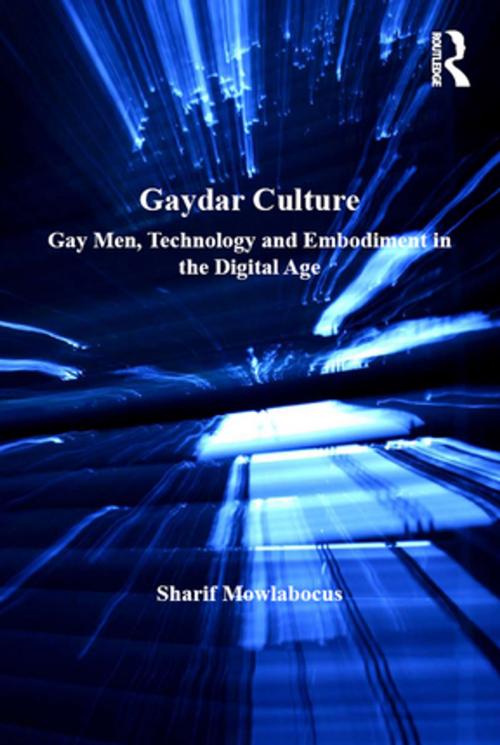Gaydar Culture
Gay Men, Technology and Embodiment in the Digital Age
Nonfiction, Social & Cultural Studies, Social Science, Gender Studies, Gay Studies| Author: | Sharif Mowlabocus | ISBN: | 9781317130864 |
| Publisher: | Taylor and Francis | Publication: | April 22, 2016 |
| Imprint: | Routledge | Language: | English |
| Author: | Sharif Mowlabocus |
| ISBN: | 9781317130864 |
| Publisher: | Taylor and Francis |
| Publication: | April 22, 2016 |
| Imprint: | Routledge |
| Language: | English |
Popular culture has recognized urban gay men's use of the Web over the last ten years, with gay Internet dating and Net-cruising featuring as narrative devices in hit television shows. Yet to date, the relationship between urban gay male culture and digital media technologies has received only limited critical attention. Gaydar Culture explores the integration of specific techno-cultural practices within contemporary gay male sub-culture. Taking British gay culture as its primary interest, the book locates its critical discussion within the wider global context of a proliferating model of Western 'metropolitan' gay male culture. Making use of a series of case studies in the development of a theoretical framework through which past, present and future practices of digital immersion can be understood and critiqued; this book constitutes a timely intervention into the fields of digital media studies, cultural studies and the study of gender and sexuality.
Popular culture has recognized urban gay men's use of the Web over the last ten years, with gay Internet dating and Net-cruising featuring as narrative devices in hit television shows. Yet to date, the relationship between urban gay male culture and digital media technologies has received only limited critical attention. Gaydar Culture explores the integration of specific techno-cultural practices within contemporary gay male sub-culture. Taking British gay culture as its primary interest, the book locates its critical discussion within the wider global context of a proliferating model of Western 'metropolitan' gay male culture. Making use of a series of case studies in the development of a theoretical framework through which past, present and future practices of digital immersion can be understood and critiqued; this book constitutes a timely intervention into the fields of digital media studies, cultural studies and the study of gender and sexuality.















